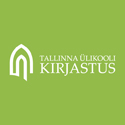Kuidas mõõta süntaktilise komplekssuse arengut lastekeeles [How to measure the development of syntactic complexity in child language]
Abstract
As language consists of layers with different degrees of complexity, there is a need to take complexity into consideration in child language research. Here, the central aim is to give a critical overview of syntactic complexity theory and the methods that are used to measure this phenomenon in the spontaneous speech of a child acquiring his/her fi rst language. Based on multiple viewpoints (see Kirjandus above), the two main methods and tools are discussed: measuring syntactic complexity in children’s spontaneous speech by MLU (mean length of utterance) and IPSyn (Index of Productive Syntax). Besides critical comparison of the two, the usefulness of these tools―created for a flective language, such as English― in studying other types of languages is examined; e.g. can they also be used with Estonian, an agglutinative type of language. Whatever measuring tools one is planning to use, it is the researcher’s own conscious knowledge of syntactic complexity and the possibilities of measuring it with certain tools that come fi rst. In addition, the role of motherese, i.e. mother’s, father’s or any other caretaker’s child-directed speech has to be taken into account: at the very beginning, the child does not acquire the potential complexity of the whole language, but only of a register similar to his/her caretaker’s speech.
Keywords
L1 acquisition, structural complexity, absolute complexity, input language, motherese, child-directed speech
Full Text:
PDFRefbacks
- There are currently no refbacks.
Published by / Kirjastaja:

ISSN 2504-6616 (print/trükis)
ISSN 2504-6624 (online/võrguväljaanne)
